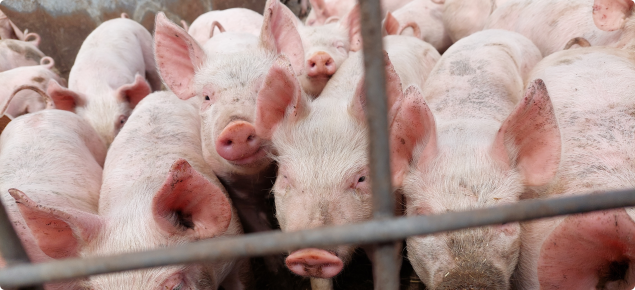Design considerations
- Community amenity. There is a separation distance calculation specific to the piggery industry that should be used to determine the separation distance required between a piggery and the nearest sensitive receptors.
- Surface water protection. In an indoor piggery this is achieved by catching and containing wastewater, normally through the use of drains and ponds.
- Groundwater protection. In indoor piggeries, constructing an impermeable liner under piggery infrastructure is the most effective way to protect groundwater.
- Clearing. If clearing is necessary in establishing or expanding a piggery, please visit the WA State Government website for more information.
Regulatory obligations
- If the piggery has a design capacity of 500 head or more, a works approval to construct is required through DWER.
- If the design capacity of the piggery is 500-1000 head then you will need a registration to operate.
- If the design capacity of the piggery is 1000 head or more you will need a licence to operate.
- Additional information on the DWER process is available here. It is recommended that you ask to hold a scoping meeting with DWER, which will ensure you are on the right track in siting, designing and operating the feedlot.
- Piggeries of any size need to seek planning approval through their Shire/City. To understand the requirements of planning approval for your shire, it is recommended that you speak to the Planning Officer (or CEO) as early as possible.
Industry guidelines and additional resources
To reflect the different design and operational requirements of indoor and outdoor piggeries, there are separate national environmental guidelines.
Guidelines that should be considered when planning to establish or expand a piggery include:
- National Environmental Guidelines for Indoor Piggeries (NEGIP)
- National Environmental Guidelines for Rotational Outdoor Piggeries (NEGROP)
- Model Code of Practice for the Welfare of Animals: Pigs
- ABD Guideline: How to Prepare a Solid Waste Management Plan
- ABD Guideline: Land Application of Solid Animal By-Products
Other resources that can assist you in planning and operating your facility include:
- Piggery Manure and Effluent Management and Reuse Guidelines
- Minimising Odour from Piggeries
- Reducing Energy Costs in Piggeries
Key contacts
The following are valuable points of contact within the pork industry:
For further information or advice, please contact Agribusiness Development at agribusiness@dpird.wa.gov.au

